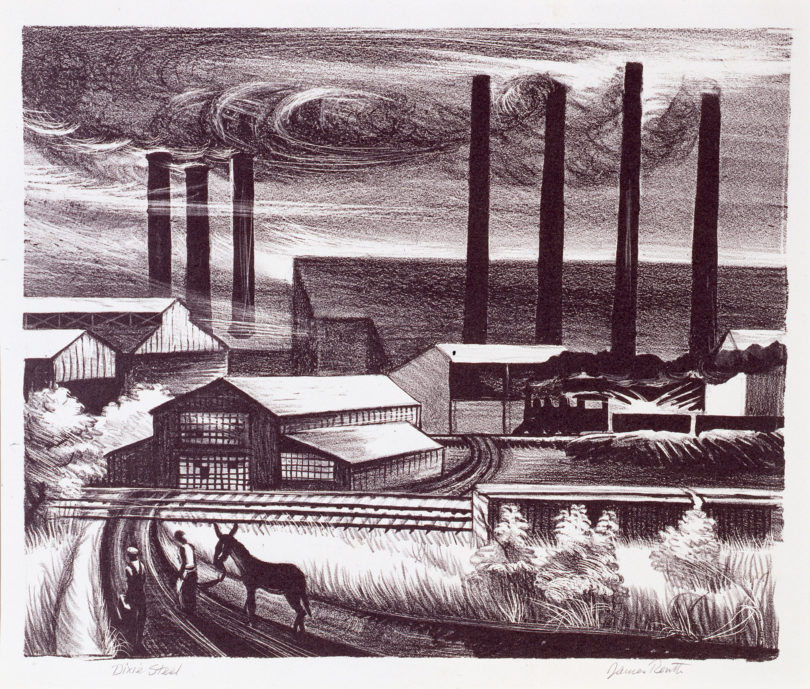More than 30 graphic works by James E. Routh Jr. are on display in the exhibition, The South in Black and White, at the Georgia Museum of Art until Oct. 21.
The exhibition, organized by GMOA and originally on view at the Robert C. Williams Paper Museum in Atlanta, features prints and paintings Routh created while traveling throughout the South during the Great Depression.
Organized by Laura Valeri, an associate curator of European art at GMOA, the show features scenes depicting rural Georgia dominated by the cotton industry. Reflecting Routh’s feelings on the degradation of the landscape, his works on paper focus on the damaged and eroded land resulting from years of over-cultivation as well as the impoverished state of the South.
“Routh’s depiction of the state of the land shows it as it was in the 1930s and 1940s,” said Valeri. “It causes the viewer to think about the decades of abuse toward the land that led up to its appearance as Routh recorded it.”
Routh was born in New Orleans in 1918 and grew up in Atlanta, where he studied at Oglethorpe College, now Oglethorpe University, for two years before enrolling in the Art Students League in New York City to study painting, printmaking and lithography.
After he received a Rosenwald fellowship in 1940, Routh traveled throughout Georgia and the South for 16 months creating ink wash and watercolor works, which he describes as “. . . scenes of everyday life in the South.” Routh’s prints reflect the hardships endured by many Southerners he saw during this trip.
Routh’s prints do not directly address poverty, but the struggles of the South are apparent in the poor condition of houses and farms in the background of many of his prints. Other prints in the show depict factories invading the rural landscape, emitting black clouds of smoke as workers approach, dwarfed by the smokestacks.
Routh’s prints also capture agricultural scenes that have been lost in the urbanization of Atlanta and its suburbs.








